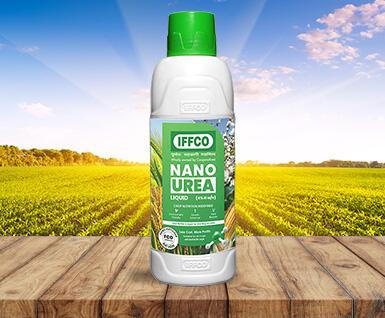This government cannot be faulted for evidence-based decision-making. It has promoted traditional agriculture, chemical-free organic cultivation, and back-to-basics Zero Budget Farming. One or more of these concepts has been mentioned in four of the past five Budget speeches. In her 2023 budget speech, Finance Minister Nirmala Sitharaman spoke of “alternative fertilisers”. In this year’s interim Budget speech, she has gone a step ahead. The government will promote Nano DAP for all crops and in all agro-climatic zones, she said, after the “successful adoption” of nano urea.
The two are not alternatives, but chemical fertilisers reduced to nano particle size and applied not to soil, but on leaves. They are patented products of IFFCO, India’s largest fertiliser cooperative. These fertiliser forms have caught Prime Minister Narendra Modi’s fancy. According to an official release, he approved nano urea in February 2021. By March 2023, more than 60 million half-litre bottles of it had been produced, the release said. Last April, the Home Minister launched Nano Di-ammonium Phosphate (DAP). Plans are afoot to launch nano micronutrients like zinc and copper as well. Nano fertiliser factories have been established in Gujarat. More are planned elsewhere.
Urea is sold in 50-kg bags (45 kg now to reduce usage, as farmers apply it by the bag, not kg). Agricultural scientists say it is an established science that to produce one tonne of paddy or wheat, plants need 20 kg of nitrogen. Urea has 46% nitrogen. To produce five tonnes of wheat per hectare (five acres), which is the average productivity of Punjab and Haryana, 100 kg of nitrogen or about five 45-kg bags of urea have to be applied.
According to IFFCO, if a base dose of granular urea is applied, 500 ml of nano urea sprayed in two stages about four weeks after germination and three weeks after the first application can replace one bag of granular urea in one acre.
IFFCO’s website has details of nano urea trials on crops planted since the winter of 2019-20 in 27 states and one Union Territory. The 13,892 trials show an average yield increase of 6.90% over crops in farmers’ plots where the product was not used. The results of crop-wise trials and the names of the farmers on whose plots the trials were conducted are also mentioned. The company says the product has been tested for biosafety in credible laboratories.
How can 20 grams of nitrogen in nano urea replace 20.7 kg of nitrogen in urea? Does a change of form and mode of application of urea alter the metabolism of plants and make them hyper-efficient? Or are the plants mining reserves of nitrogen in soil?
Punjab Agricultural University (PAU) scientists found grain yield was lower by 17% in the first year and nine percent the next year when nano urea was applied as per IFFCO’s recommendation. There was also a decline in the protein content of wheat. The study was done in 2020 and 2021. Half the recommended dose of urea and two foliar spread of nano urea (one litre per acre) was given. PAU’s vice-chancellor, Satbir Singh Gosal, declined comment, saying the product was under experimentation.
At the Indian Agricultural Research Institute, the scientists used nano urea as per IFFCO’s recommendation in plots with no urea and 75%, 50% and 100% of the usually applied dose of urea. IFFCO funded the study, but the scientists say that did not influence their trials. The required amount of potassium and phosphorous was also applied. According to the published study, wheat and mustard yields were maintained when 75% of the recommended dose of nitrogen was given in granular form in the first year. But yields declined “significantly” in the second year. Yields also declined “significantly” when the IFFCO protocol of 50% granular urea and two nano sprays was followed. Nevertheless, the study team went on to recommend nano urea application with 75% urea for wheat, pearl millet, maize and mustard. This would result in a huge saving of subsidised urea, it said. While asserting that nano urea could bring about a “paradigm shift in the fertiliser consumption scenario”, it called for the findings to be validated across crops before any policy decision was made.
Farmers don’t seem to have taken a fancy to nano urea. Otherwise, there would have been no need for dealers to bundle the sale of nano urea with granular urea. After the Bharatiya Kisan Union in Karnal protested against the practice last month, the district’s agriculture department prohibited it.
Nano urea (or DAP) is not subsidised. So the government has an interest in pushing the product. The fertiliser subsidy this year is expected to be ₹1.9 lakh crore, or 4.2% of the Central government’s total expenditure. There is overuse of urea fertiliser because it is sold at a sixth of the landed cost of imports.
Magical thinking affects regimes and leaders who think their ideology or leadership is so exceptional it can make miraculous change possible. Andhra Pradesh Chief Minister N. Chandrababu Naidu wanted the entire state to practise chemical-free natural farming. He set himself up as a champion of sustainable agriculture and was felicitated in France, just as in his previous stint in office he was celebrated as an IT evangelist. Under Prime Minister Modi indigenous cows have been found to have A2 milk, which apparently does not cause lactose intolerance unlike milk produced by exotic breeds. Spirituality and tradition were found to have a transformative effect on agricultural yields when Radha Mohan was agriculture minister. Nano urea may be another manifestation of the ‘Modi hai toh mumkin hai’ syndrome.


























